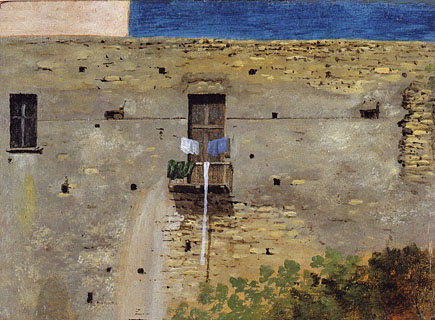On 2 July 1954 an unheralded portfolio of about fifty watercolours and oil sketches was put up for auction at Christie’s. It was described in the sales catalogue as “The property of a lady whose husband was a descendant of Thomas Jones, a pupil of Richard Wilson, R.A.” The boistrous and bibulous Wilson, painter of idealised scenes from nature, was a well known figure, widely regarded as the father of the British landscape painting tradition. But his erstwhile pupil, Thomas Jones, creator of this hitherto unknown cache of small, vividly observed and strikingly composed depictions of buildings, landscapes and ruins, had by the mid-1950s long been consigned to the margins of art history. Known to specialists as the author of an engaging manuscript of memoirs, amounting to the earliest autobiography by a British painter, he was otherwise (in the words of his most articulate twentieth-century admirer, Lawrence Gowing) “as inconspicuous as anyone could be without disappearing altogether into the trackless boskage of pre-Romantic landscape.” But all that was about to change.
Bidding for the various lots was not brisk and most were knocked down cheap to James Byam Shaw, working for the London dealer Colnaghi’s, and Evelyn Joll, working for the rival firm of Agnews. None fetched more than 20 guineas. Over the years that followed a lot of people were to kick themselves for having missed that particular boat. Slowly but surely that neglected portfolio came to be prized by discerning collectors, connoisseurs and museum curators as a treasure trove filled with works of startling power and prescient genius – pictures painted in the third quarter of the eighteenth century that seemed, in their close focus on the unattended beauties of the mundane world, in their bold plein-air techniques and austerity of composition, to predict the most adventurous...

